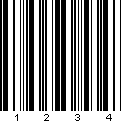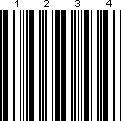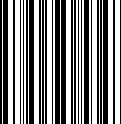codabar
Codabar is a linear barcode symbology developed in 1972 by Pitney Bowes Corp. It is also known as Codeabar, Ames Code, NW-7, Monarch, Code 2 of 7, Rationalized Codabar, ANSI/AIM BC3-1995 or USD-4. Library Book Barcode.*
It was designed to be accurately read even when printed on dot-matrix printers for multi-part forms such as FedEx air bills and blood bank forms, where variants are still in use as of 2007. Although newer symbologies hold more information in a smaller space, Codabar has a large installed base in libraries.*
Codabar can encode digits and the following special characters: - . $ : / +
The encoded text must be delimited by a start and an end, to be selected between upper-case letter A, B C or D.
Note:
The start and end characters are not displayed in the human readable text.
 |
Labeljoy requires you to enter a text of up to 255 characters to generate the barcode. |
| Codabar symbol |
 |
| Codabar encoding digits and special characters |
Text concatenation:
When a Codabar barcode element is generated by concatenating fields or counters, the following rules apply:
- Only texts containing digits and the allowed special characters will be considered.
- Texts must be delimited by one of the four allowed upper-case characters.
For instance, to encode 1234+5678, the field should contain the following text: A1234+5678B, where A and B are respectively the start and end delimiter and will not be displayed.
When a value not complying with the above rules is found, the barcode is not displayed.
The human readable text can also be shown above the symbol or hidden according to the setting specified in the Text combo box.
 |
 |
| Codabar with text above the symbol | Codabar with hidden text |
* From wikipedia.
